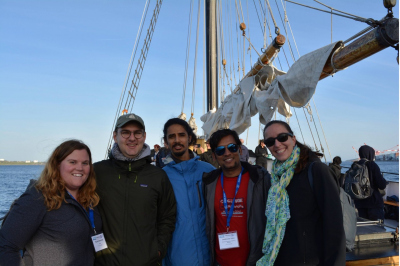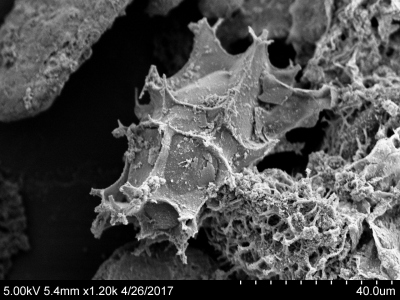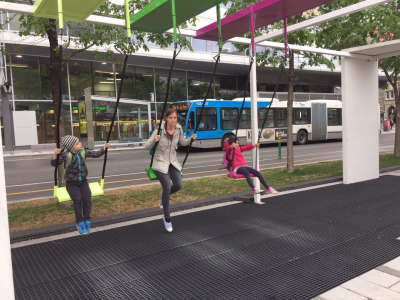- ArcTrain
- Research stays abroad
- Research stay at UQÀM (S. Hohmann)
Research stay at UQÀM (S. Hohmann)
March 13 - June 30, 2017, Montreal, Canada
Summary:
I spent 16 weeks on a research stay at the GEOTOP/UQÀM in Montréal, Canada under the supervision of Anne de Vernal working on the reconstruction of primary productivity in Southern Melville Bay (Arctic) using a sediment core. I learned about approaching the issue of primary productivity estimation by applying organic-walled dinoflagellate cyst assemblages and the modern analogue technique by using a database developed at the GEOTOP.

Sea-ice cover in the Arctic is declining fast and marine ecosystems in this region are known to react quickly to changing environmental conditions. However, studies indicate that ocean conditions in this area in general have been highly variable on millennial to decadal time scales. Therefore, to assess the current trend a long-term benchmark of ecological response is required. During my project I aim to generate a long-term high-resolution fossil record of biological productivity patterns for the Holocene using microfossil assemblages and abundances from a sediment core from the Baffin Bay, north-west of Greenland.

I spent 16 weeks on a research stay at the GEOTOP/UQÀM in Montréal, Canada under the supervision of Anne de Vernal. During my stay I worked on analysing organic-walled dinoflagellate cyst assemblages within the sediment core I am working on. With the help of Maryse Henry I learned how to process the samples in the lab, which involves a lot of sieving and acid treatment. I learned how to establish slides for the analysis of the samples under the microscope and how to identify dinoflagellate cyst species for the Baffin Bay region.
After the procession of my samples I started counting the species in my slides for the assemblage analysis. Maryse Henry also helped me taking some amazing images of the dinocysts with the scanning electron microscope (SEM).
The aim of counting the assemblages was to reconstruct the primary productivity downcore during the Holocene with the help of a transfer function using the modern analogue technique. For this approach, I applied the “n=1492” dinocyst database (de Vernal et al., 2013),

which was developed at the GEOTOP/UQÀM. I had the opportunity to meet and work together with other (ArcTrain-) PhD-Students, also working with this database.
This research stay was very beneficial in many cases. I dived into the (for me) new field of organic-walled dinoflagellate cysts, learned a new lab technique and how to work with transfer functions. It was very exciting meeting other scientists working with the same method and also to explore Montréal and the area around the city. Canada is an amazing country and I thank ArcTrain for making it possible for me to work at the university there (ArcTrain fund) and to take my family with me (Equal Opportunity fund) for this exciting experience.
Sabrina Hohmann


